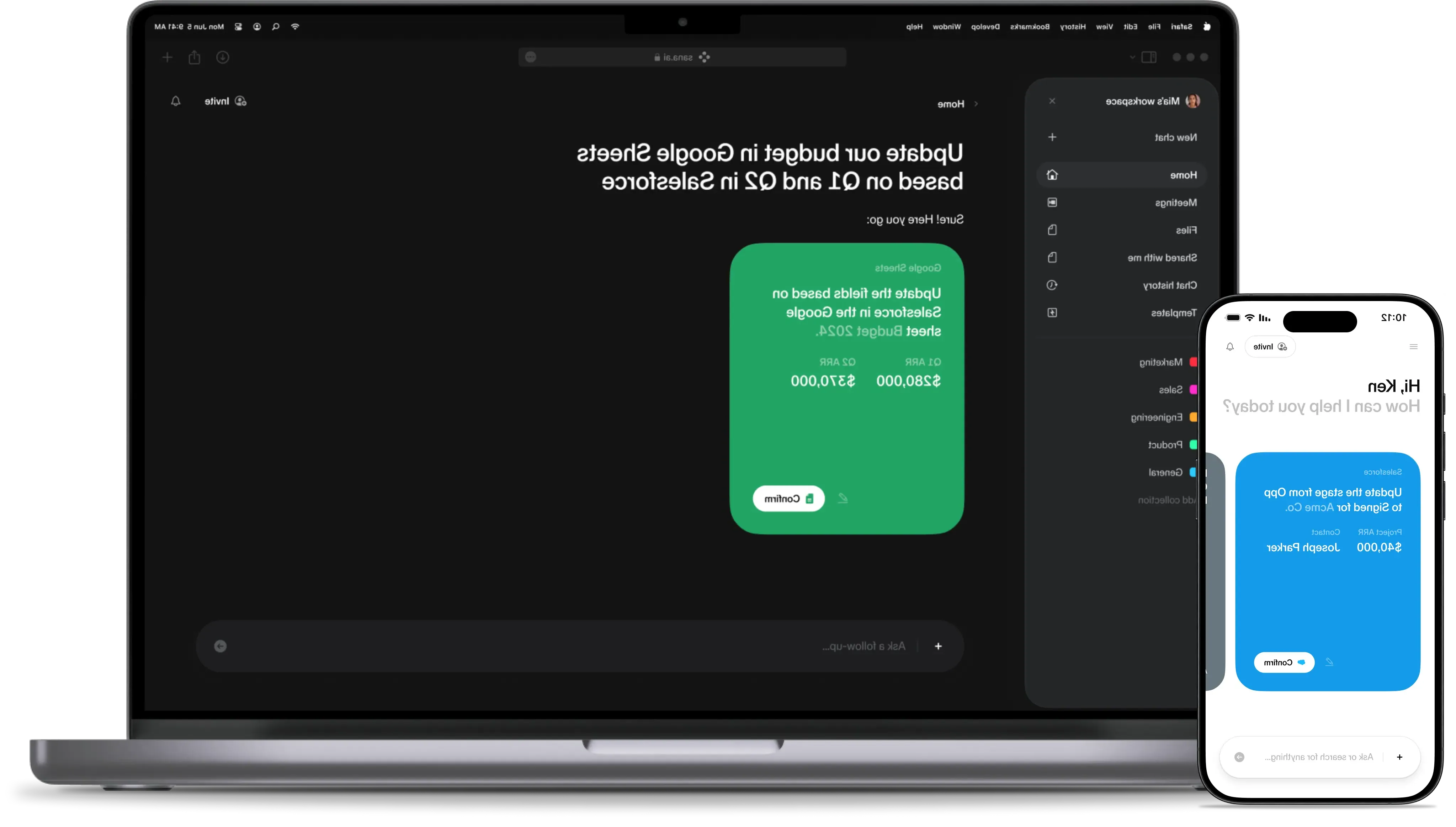快速发展的组织如何以及为什么应该重新构想电子学习

电子学习并不是你想象的那样
什么是电子学习?
在美国,电子学习已经成为一个流行词&很长一段时间. 缩写的全称是指通过电子方式学习.
传统上,电子学习主要以两种形式存在:
- 在线课程采取自己的节奏. 比如在电脑上看书.
- 与小组一起进行虚拟培训. 比如在教室里用笔记本电脑上课.
As largely passive experiences, these traditional forms of e-learning 努力创造用户粘性. That's why e-learning has developed a bad rep—especially within the workplace. 通过将电子学习与在线课程和教室相关联, 我们不公平地缩小了电子学习的定义. 然而,今天的电子学习的现实实际上是非常不同的.
什么是电子学习?
Just like regular learning, e-learning happens everywhere within an organization. 它发生在在线复古期间, 当有人在聊天中问问题时, or in any other interaction where we exchange ideas and knowledge online.
公司发展得越快,产生的知识就越多. The more knowledge it produces, the most scattered that knowledge becomes.
Harnessing all this knowledge is the key to unlocking the true potential of e-learning.

伟大的电子学习始于克服巨大的内容分散
什么是伟大的内容分散?
公司发展得越快,产生的知识就越多 and amasses in more places. Think about all the tools your organization uses to share knowledge and information informally:
这样的例子不胜枚举.
这些工具蕴含着丰富的专业知识. The sum of all this content is the collective intelligence of your organization. That collective intelligence is worth more than its weight in gold. But you can't realize its value because your knowledge is too scattered.
这就是我们所说的大内容分散. 这些工具可能不是正式的电子学习工具, 但是他们是你的组织学习的地方.
如何克服内容分散的问题?
巨大的内容分散会耗费你的时间和金钱. 考虑这个场景:
Your newest sales rep wants to check your company expense policy before inviting a prospect to lunch. 他们记得在入职培训期间看到了一张幻灯片, 但他们不确定那个滑梯在哪里. 所以他们给你的财务经理发邮件,等待回复. Imagine 100 of these micro-moments happening across your company every single day.
当你的内容是分散的, the people looking for answers spend more time than needed searching for them. 而那些拿着答案的人花了太多时间回答问题. That's precious time everyone could be spending on the task at hand.
The six-different-platforms-solution is neither structured nor scalable. It might suit a five-person startup, but it will hinder a five-hundred-person scaleup. To harness the power of your organization's collective knowledge and expertise, you need to simplify. 你需要一个家来完成所有的电子学习.
The e-learning solutions of the future make all your knowledge and learning content dynamic. 一切都应该是:
- 可编辑:任何人都应该能够实时更新内容
- Queryable: Everyone should be able to search for what they need when they need it and receive the right information
一旦你有了这个基础,乐趣就可以真正开始了.
首先,简化电子学习. 然后让它引人入胜.
With an e-learning solution in place, it's time to take the next step. 电子学习需要有吸引力才能有效. 在萨那, 我们相信个性化学习是最吸引人的, 协作, 和互动. 以下是为什么以及如何充分利用这些学习模式.
(a)个性化课程,使电子学习更具相关性
每个人的知识水平和学习需求是不同的. 这就是为什么个人经历 适应他们需求的学习表现更好 那些没有的.

Sana is one of the few platforms using Artificial Intelligence to deliver personalized learning experiences at scale. 多亏了分班测试等智能功能, Sana will assess the knowledge level of everyone starting your course and skip each person past what they already know. Then Sana will tailor 小测验 to each person's knowledge gaps to increase knowledge retention. 所以,无论你的团队是在上合规课程还是教练课程, 这种体验会让每个人都觉得相关.
(b)开展协作会议,使电子学习更加活跃
Active, hands-on learning with peers is one of the most powerful ways to grow. We form new perspectives and ideas when discussing, debating, and applying our knowledge. That collective experience boosts knowledge comprehension and retention.

Sana's natively-built live experience makes it easy to bring your remote or hybrid teams together. 用一段视频开始你的话题, 接着做一个民意调查来评估意见, 然后根据这些投票结果将小组分成几组. Use those breakouts to facilitate deeper discussion or work actively on solving a problem. Reflection cards and chat threads are always there to engage those less confident in speaking up.
(c) Make all learning experiences interactive to boost performance
卡内基梅隆大学的研究表明,我们会学习 六倍多 互动的电子学习和常规的在线课程.

在萨那,你可以让任何类型的学习体验互动. 民意调查, 小测验, 反映卡, and more are available for both self-paced courses and live group sessions.
这些成分中的任何一种都可以为你的电子学习增添情趣. 把这三者结合起来,你就做出了神奇的配方.
围绕电子学习建立一种持续的文化
工具只能帮你到此为止. The most successful e-learning strategy combines innovative technology with an open-minded culture. 这种文化必须来自最高层. Unless your leaders prioritize learning, the rest of your organization never will.
这里有两个建议可以让你走上正确的道路.
1. 建立非正式的学习习惯
Rituals are recurring activities or interactions that help employees connect. 他们是将团队文化凝聚在一起的粘合剂.
在萨那, we use learning rituals to lower the knowledge-sharing barrier. 其中一个仪式是午餐和学习. Twice a month, a member of the Sana team will deep-dive into a chosen topic of interest or expertise. We've had subjects range from understanding effective communication to identifying eight types of bears. 然后是上周我学了,又名LWIL. LWIL每周一举行全体会议. Someone takes three minutes to share something interested they learned during the previous week. It's a popular ritual because it lightens up an important all-company gathering while also being light on the preparation. Naturally, we run all of these rituals directly in the Sana platform.
2. 知识共享和以身作则
我们不能成为我们看不见的人. If leaders want their teams to make the time to learn, leaders must make time themselves.
One tactic is to become the ambassador for your e-learning platform. Use it in team settings as much as possible, show others how to use it, reinforce the benefits. 在萨那, we use our own platform to host everything from our company handbook to our daily standups.
另一种以身作则的简单方法是划出你的时间. If your company has an open calendar policy, set a recurring "learning time" invite for yourself. When a conflicting meeting comes up, say you'll have to reschedule. 通过建立一个学习程序,我们形成了一个学习习惯. 习惯比动机更可靠. 越多的人看到你坚持你的学习习惯, 他们就越有动力去做同样的事情.
一个家容纳你所有的学识
探索萨那


